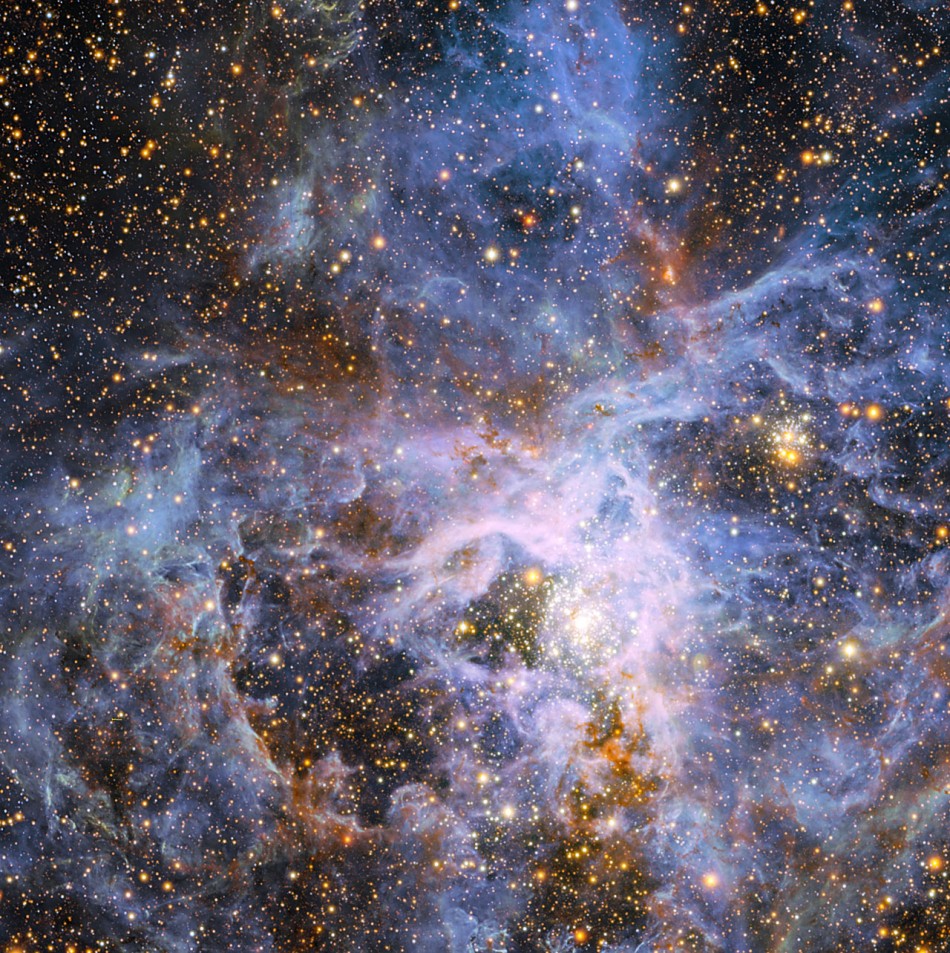Building blocks of life found in an alien star-forming cloud 200,000 light years away
The Large Magellanic Cloud, just outside the Milky Way where stars are born, has the capacity to also build life.



For the first time ever, complex carbon-based molecules have been identified in a star forming region just outside the Milky Way. The presence of methyl formate and dimethyl ether has been identified by the Atacama Large Millimeter/submillimeter Array (ALMA) operated by the European Southern Observatory.
The Large Magellanic Cloud (LMC) is a region that is roughly 200,000 light years away from Earth and is known as the Milky Way's satellite galaxy. It is ablaze with star forming clouds and creates stars for the Milky Way as it goes on a slow, never-ending revolution around the entire galaxy.
This intensely active, star forming region has been identified as hosting complex carbon molecules, reports the American Astronomical Society (AAS). On how these organic molecules appear in these dense gasses within the LMC, researchers are still not sure.
A team of researchers led by Nasa's Marta Sewiło detected two complex organic molecules — methyl formate and dimethyl ether — for the first time in the LMC. Previous searches for organic molecules led to the discovery of methanol which is the parent chemical of the now discovered compounds.
This finding is momentous, notes the AAS, not only because complex organic molecules are the "building blocks of life", but also because dwarf galaxies like the LMC were previously thought to not have an abundance of heavy elements that are needed to build organic molecules like oxygen, carbon, and nitrogen. An organic molecule is defined as a molecule of at least six atoms, with a minimum of one carbon atom in the mix.
Understanding how complex molecules are formed in the core of star formation offers interesting insights into how life could have formed on Earth, or in other parts of the Galaxy, notes the report. Organic molecules are everywhere in the Universe, from atmospheres around exoplanets, to interstellar space, but life is not so easy to form and flourish.
Life might have been brought to Earth when such complex molecules travelled on dust streams in the early years of the Solar System. An ongoing study has theorised that fast moving streams of dust travelling through galaxies between star systems could have reached Earth at just the right time to plant life here.





















